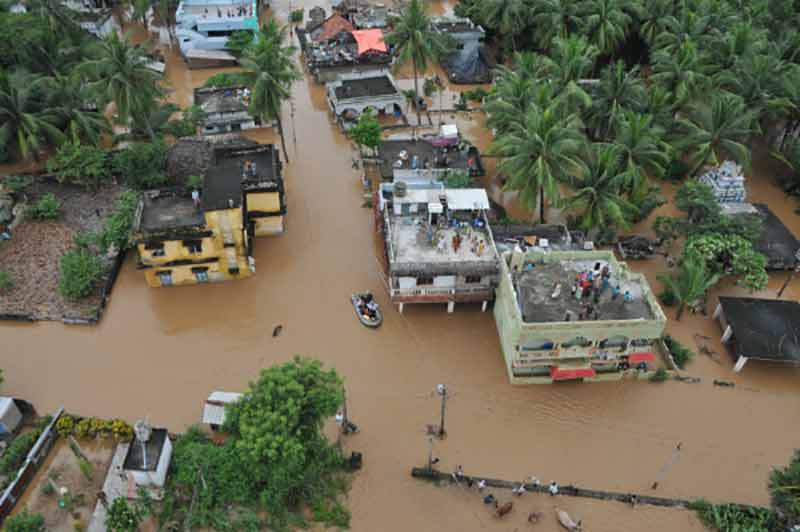
Covid-19 has dominated 2020. It has been the top priority for almost every nation across the globe, and while dealing with the pandemic, many governments have also had to tackle national natural disasters and severe weather incidents.
In the first half of 2020, the world experienced many major natural disasters. And Asia has experienced at least ten of them in the first six months. The continent has faced everything from earthquakes, floods, landslides, volcanoes, typhoons, bushfires, all while dealing with the pandemic.
This year really has kept governments on edge, waiting for what is to come next. And this is a key point – What will come next? And are governments prepared for all eventualities? Have they planned for what would happen if a natural disaster were to occur? And how would they deal with a severe weather event while also dealing with the ongoing global pandemic?
Major Natural Disasters that Occurred in the first 5 months of 2020 in Asia
Bushfires, Australia
At the end of 2019 and early 2020, the bushfires in Australia spread quickly across the country. A state of emergency was declared in Queensland and New South Wales in November 2019, and slowly all the other states followed as the fires continued to spread.
The Australian bushfires are considered one of the biggest natural disasters of the year. The extent of damage ranged from an estimated 18 million hectares burned, over 9000 buildings and homes destroyed, and 400 deaths directly or indirectly.
Flash Floods, Indonesia
Flash floods occurred throughout the Indonesian capital of Jakarta and its metropolitan area on the early hours of 1 January 2020, due to the overnight rain which experienced nearly 400 millimetres (15 in) of rainwater, causing the Ciliwung and Cisadane rivers to overflow. At least 66 people have been killed, and 60,000 displaced in the worst flooding in the area since 2007.
Volcano Eruption, Philippines
The second most active volcano in the Philippines, Taal Volcano erupted in January 2020. On 12th January. As a result, a large amount of ash dust was emitted and forced authorities to evacuate over 8,000 people close by and 3,00,000 people overall.
Cyclone Amphan, Bangladesh-India
Cyclone Amphan is classified as one of the most powerful, deadly tropical cyclones to ever impact Bangladesh and India. It was categorized as a category 5 hurricane and the havoc it wreaked was devastating. It caused landfalls, heavy rains and lightning causing major destruction and killing 12 people.
Forest Fires, Uttarakhand – India
In May, a forest fire that lasted for days caused Uttarakhand to burn. What may have started as a small fire has managed to engulf 51 hectares of forest land. 2 deaths and several others have been injured.
Assam Floods, India
Many parts of Assam have experienced heavy rains and as a result, have been negatively affected in the form of floods. 128 villages, 5 districts and many more have been affected.
Disaster and Emergency Management Agencies release figures showing the true extent of the cost of severe weather
As Governments throughout Asia release the figures relating to severe weather and natural disasters, it is evident how costly these events are in terms of lives, homes, economy and infrastructure.
China
Natural disasters continue to hit China, and the country lost 271 lives during the first half of 2020, an official report showed. Some 19,000 houses were destroyed and 785,000 houses damaged during the last six months across mainland China, causing an economic loss of $11.5 billion, Global Times quoted a report by the Ministry of Emergency Management.
Last month’s heavy floods in eight provinces and regions of southern and eastern China affected more than a million people. The June 8 floods affected at least 1.76 million people, with 120,000 evacuated, nine dying and five missing, according to the Centre of Disaster Reduction in China.
Indonesia
The National Disaster Management Agency (BNPB) released numbers this week, they recorded 2,059 natural disasters that struck Indonesia during the period from January to September 20, with the number of deaths reaching 282.
Indonesia was hit by 771 incidents of floods, 534 whirlwinds, and 377 landslides. The natural disasters had affected and displaced a total of 4.2 million people, claimed 282 lives, and rendered 25 people missing while causing injuries to 427 others.
Furthermore, natural disasters damaged 30,655 homes and 1,419 public facilities. The country also recorded a total of 302 forest and land fires as well as five volcanic eruptions.
Governments Urge For Better Response to Severe Weather and Natural Disasters
Governments are quickly realising the need to act now to prevent, or rather, manage the events that they already know could happen at any time. This week saw governments in Asia review emergency planning and funding strategies as well as call on their technology institutes to work on preventing future disasters.
Australia
The Royal Commission in Australia, heard this week that more frequent natural disasters in Australia will become ‘a major strategic problem in its own right’. The commission is in its final week of hearings and is due to deliver its final report to the federal government on 28 October.
The Australian Defence Force (ADF) was called in to help the bushfire response this summer, and have been integrated into health and police departments as part of the response to the coronavirus pandemic. Peter Jennings, the executive director of the Australian Strategic Policy Institute, told the Royal Commission on Tuesday this week that the ADF would not be able to continue support with its actual defence responsibility without additional funding.
Peter Jennings added that more frequent and more severe national disasters, exacerbated by the climate crisis, would become “a major strategic problem in its own right”. And that the Pacific region, and south-east Asia, would be “the epicentre of natural disaster risk going forward”.
One of the initiatives that the Australian government is using to help with crises is a public warning system. In combination with Australia’s major telecommunications companies, the Everbridge Public Warning solution will be used to power Emergency Alert Australia, providing population-wide alerting to help reach the country’s over 25 million residents and approximately 9 million annual visitors.
Anyone in an area where a sudden, critical event occurs such as fire, extreme weather or a terror attack, residents and visitors to Australia will receive location-based SMS notifications on their mobile phones, in addition to smartphone mobile app notifications and fixed-line voice alerts, among other modes of communication.
India
Also, this week, speaking at the Indian Institute of Technology, on Tuesday 22nd of September, Prime Minister Modi, India urged the IIT to use this experience in helping the state governments of the Northeastern region to tackle the various natural and other disasters which have been having a negative impact on the development prospects of the region.
He called for the IIT to form a centre for disaster management and risk reduction for the region. The Prime Minister said “The North East is full of possibilities. But it has problems of floods, earthquakes, life slam hand industrial disasters also, and the governments have to spend their time tackling these.”
The Missing Puzzle Piece: An Integrated CEM Platform
Many governments and national, regional and state authorities rely on multiple, separate systems for their critical event management (CEM).
According to world experts in Critical Event Management – Everbridge, these silos can spell redundancies in information and processes, data contradictions, and, in worst-case scenarios, greater loss of life and damages.
Without an integrated CEM platform, command centres and security teams can’t respond as quickly and as thoroughly as situation warrants, which in turn negatively affects budgets, stakeholder confidence, and employee and customer trust.
With an integrated CEM platform, however, rapid, consolidated responses are more easily coordinated. Emergency response teams and command centres receive threat alerts ahead of time, so they can identify, assess, and locate the risks, affected assets, and appropriate responders.
A CEM platform can also automate communications and by using a public warning system, action plans, and SOPs, so your teams have immediate access to information and can act at lightning speed. Later, analytics pinpoint where bottlenecks and delays surfaced and where they might be avoided in the future.
As the pandemic looms over the world for the foreseeable future, planning responses to severe weather events will continue in tandem with coronavirus risk management. And, as natural disasters are occurring more frequently throughout the region – it’s more important than ever for governments to evaluate the processes, systems, tools, and platforms they have to respond to critical events.
APAC CEM WEBINAR: MANAGING MULTIPLE THREATS WITH AN INTEGRATED CEM PLATFORM
October 28, 2020 | 10:30AM IST | 1:00PM SG/HKT | 4:00PM AEST
REGISTER TODAY
Download Everbridge’s Whitepaper: MANAGING SEVERE WEATHER EVENTS DURING OTHER CRISES
















